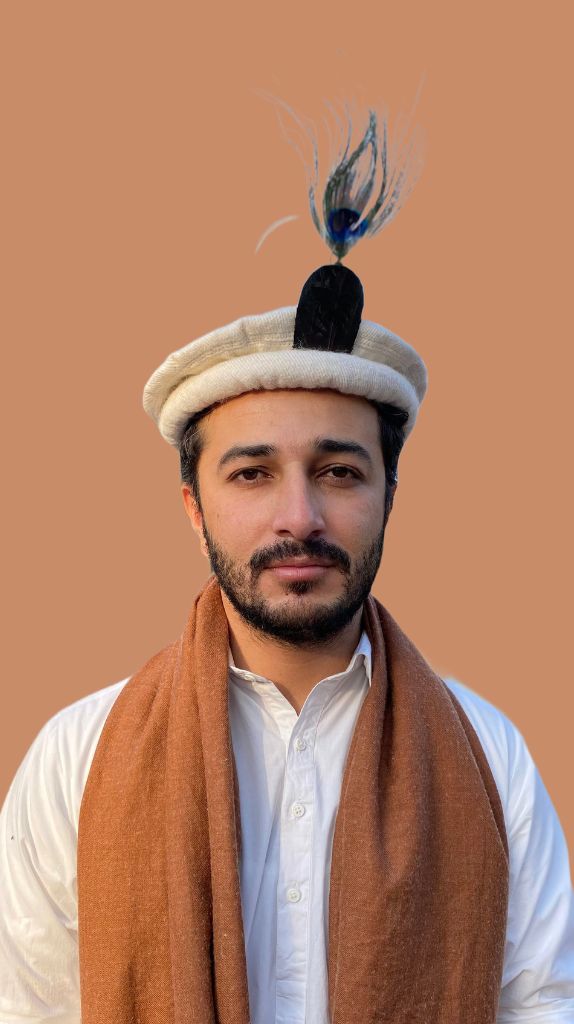In the picturesque valleys of Hunza, a distinct piece of cultural heritage graces the heads of many—the traditional handmade cap, locally known as Pharchin in the Burushaski language. This soft, woolen hat has long been a symbol of pride, honor, and identity for the people of Gilgit-Baltistan (GB), transcending generations and even crossing gender lines in modern times.
Craftsmanship and Variety
The Pharchin is meticulously crafted by local artisans using high-quality sheep wool, ensuring both comfort and durability. These caps are available in a variety of colors, including brown, grey, black, and the most revered—white. The white cap holds a special place in the hearts of the Hunza people, often considered an essential component of formal local attire. Its soft, round-topped design provides a perfect blend of tradition and elegance.
Artisans invest time and skill into each cap, making them not only a functional accessory but also a work of art. The wool is carefully processed and shaped to create a cap that fits comfortably and can withstand the test of time. Whether worn for everyday use or special occasions, each Pharchin reflects the rich cultural tapestry of the region.
A Symbol of Pride and Identity
In many areas of Hunza and the broader GB region, especially among the older generation, the Pharchin is worn with immense pride. It is more than just a cap; it is a symbol of honor and respect. Men, and now increasingly women, wear their caps at home, in the bustling bazars, during local celebrations, and in places of worship. The cap is an integral part of daily life and cultural expression.
People often own multiple caps—one for work, another for formal dressing, and a third for routine day-to-day activities. This distinction highlights the cap’s versatility and its deep-rooted significance in the community’s social fabric. Grooms in Hunza, Gilgit, Skardu, Ghizer, Chitral, and other parts of GB and Khyber Pakhtunkhwa proudly wear the Pharchin during their wedding ceremonies, symbolizing their connection to their heritage.
Cultural Significance Across Regions
The traditional cap is known by different names across the diverse linguistic landscape of Gilgit-Baltistan. In Shina and Khowar languages, it is called Khoi; in Burushaski, it is referred to as Phartsun or Pharsen; and in Wakhi, it is known as Sekeed. In Baltistan, a similar woolen cap with a slightly different feather design is called Nating in the Balti language.
The cap often features a feather or plume, known locally as Shati or Pur, affixed to the front. This adornment adds an extra layer of elegance and is a distinguishing feature of the Gilgiti cap. The feather symbolizes bravery and honor, making the cap a proud representation of the region’s cultural identity.
Beyond Tradition: Modern Usage and Global Appeal
While traditionally worn by men, the Pharchin has found its way into women’s wardrobes, reflecting the evolving cultural dynamics of the region. The cap’s versatility allows it to be paired with traditional attire like shalwar kameez or suits, as well as more contemporary outfits like jeans and casual clothing.
The Gilgiti cap has gained international recognition for its elegant and unique look. It is not only worn during local events such as marriage ceremonies, cultural shows, Eid, and other special occasions but also serves as a cherished gift, honoring guests with respect and admiration. The cap’s easy maintenance and adjustability make it a practical yet stylish accessory for both formal and casual settings.
A Legacy of Honor and Heritage
The Pharchin is more than just a cap; it is a living testament to the rich cultural heritage of Hunza and the broader Gilgit-Baltistan region. It symbolizes pride, honor, and a deep connection to tradition. Whether worn by grooms on their wedding day, by elders in daily life, or by state officials and armed forces during national and cultural events, the Pharchin stands as a proud emblem of the region’s identity.
By embracing and promoting the traditional Pharchin, we celebrate the artisans’ craftsmanship and keep alive a vital piece of Hunza’s cultural legacy for future generations to cherish.

